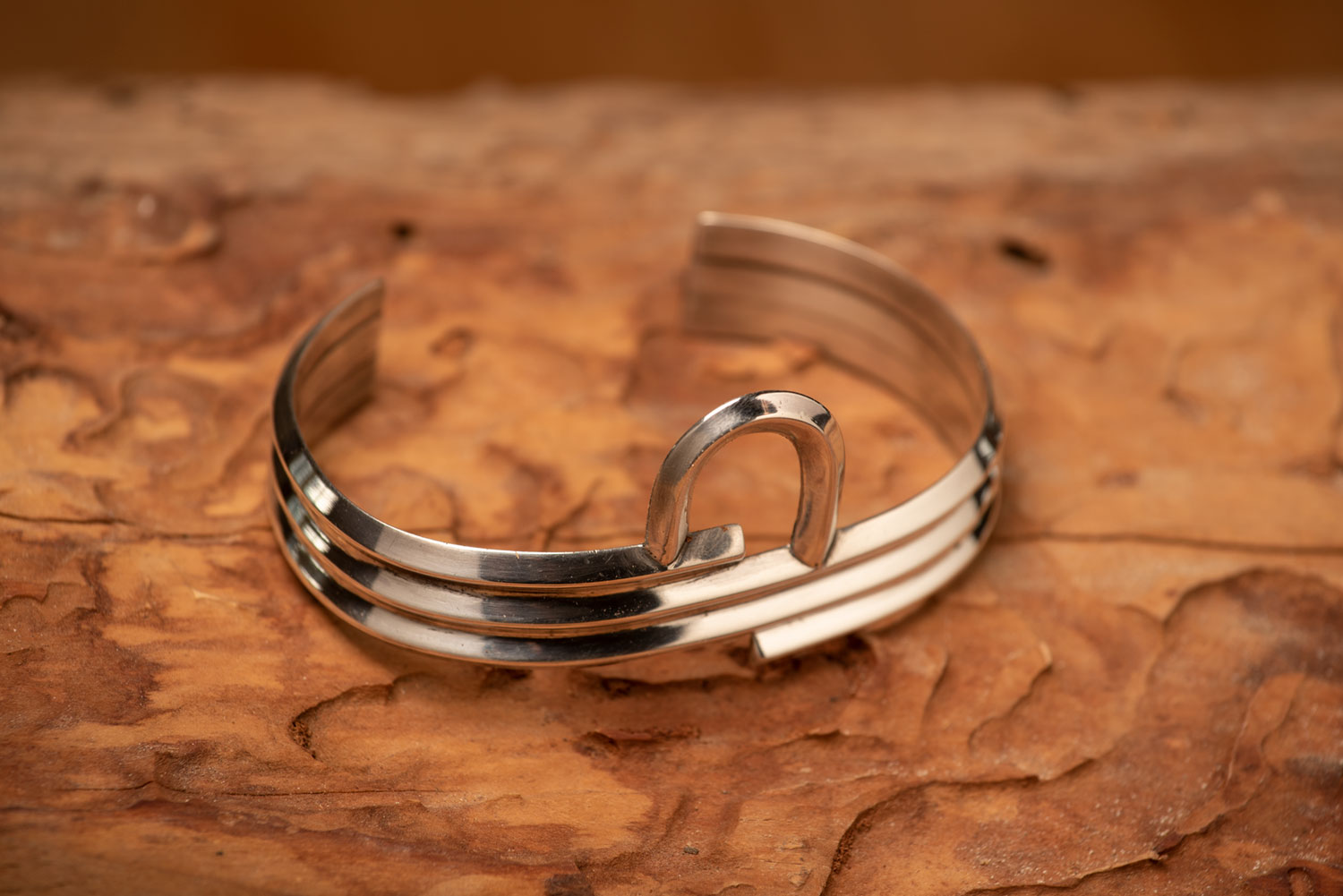Minimalist Jewelry with Meaning
Photos and jewelry by Forrest Anderson
When I met my husband Forrest Anderson, he was wearing a silver belt buckle with a wood pattern on it and a simple silver wrist band like the one in the above photo (a copy of the first one he made). They were the essence of minimalist jewelry. I was immediately intrigued by the items’ simple clean lines and glowing surface. I was even more interested when he told me that he had made them himself. How cool was that?
My advice: if you’re going to fall in love, try to fall in love with someone who knows how to do something both cool and useful. One of the beneficial side effects of our marriage is that my jewelry box is now stocked with my favorite style of minimalist jewelry.
Minimalist jewelry, part of the larger minimalist movement, is a style of jewelry that tries to bring out the essence of the materials used and the theme of a piece by eliminating unessential embellishments.
Minimalist jewelry seems to be a contradiction in terms because minimalism is about limiting your life to what you need, and the theory is that no one really needs jewelry to survive. In practice, however, jewelry has historically played a major part in societies because it symbolizes traditions, memories, ideas and aesthetics. It is a symbol of relationships, values and some of the most important things in our lives. It also can symbolize all of the things that minimalists abhore – social class, wealth, spending more than you can afford, excessive pride, gaudy taste and damage to the environment.
Minimalist jewelry tries to avoid these negative uses of jewelry by joining a single iconic idea with stones and metal to create a sleek design that highlights not the artist’s skill nor the cost of the materials but the beauty of the materials and their meaning to the silversmith. It also involves recycling stones and metal in new pieces and often using less expensive semi-precious stones.
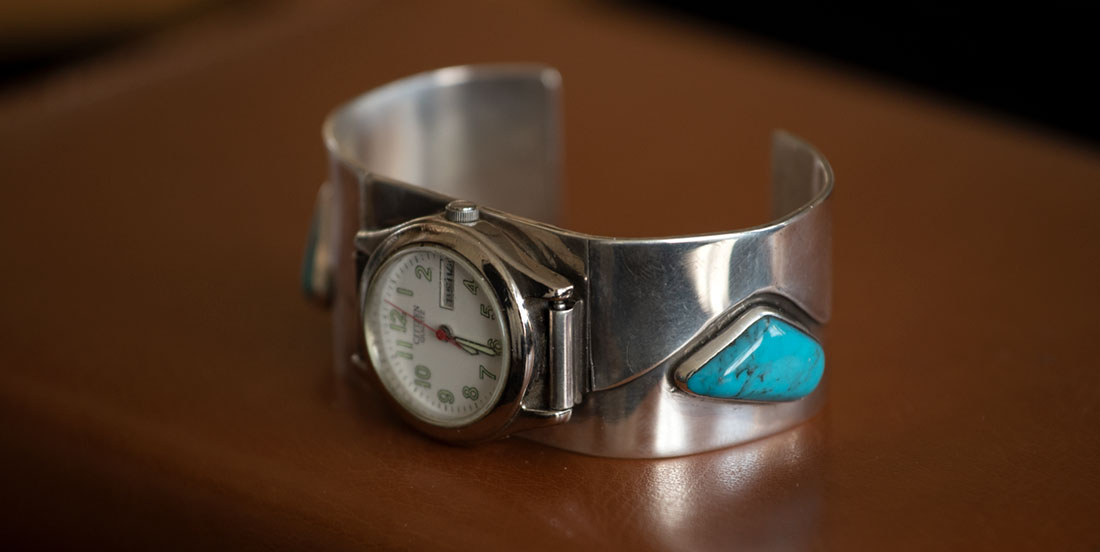
The idea behind this watchband was to use a motif of a river bank with stepping stones and water flowing around them as time flows past us.
Forrest learned silversmithing from a teacher he had as a teenager and from a master Native American silversmith who he had an opportunity to watch work. Forrest has done silversmithing as a relaxing hobby throughout his adult life. As a busy app and website developer and photographer, he spends long work hours whizzing around in the digital world. Silversmithing is a chance to leave that aside for an hour or two, slow down and use real materials to make something enduring, something that has to be done right because there is no possibility of an undo button.
“It is an interesting challenge to take a material in a basic form – sheet silver or wire silver in either round, square or triangle shape – and join it with the stones to make a cohesive form,” Forrest says. “Over the years, I’ve found that it works better when you let the stone determine the design rather than trying to make the stone conform to your idea of how it ought to fit into a design. It’s a process of achieving a balance between the highly polished silver or gold and the organic nature of the stone."

The leaf-like pattern of this green malechite determined the organic design of this necklace. Similar stones were used for matching earrings.
“I like to add an element of surprise, like on a bracelet I made that looks like a plain simple band, but when the wearer turns her wrist, there’s a beautiful stone.”
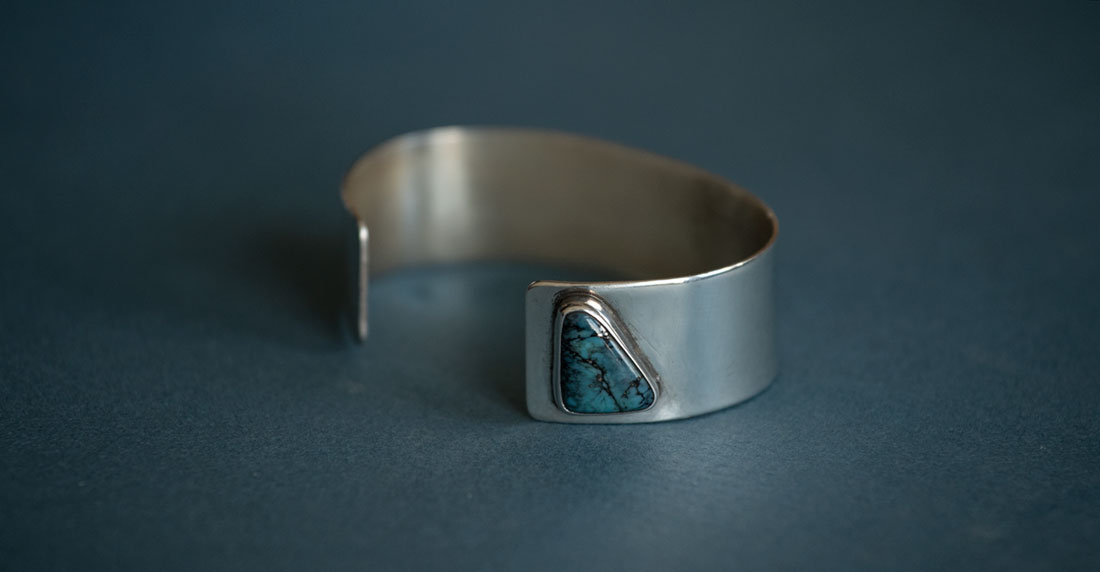
This bracelet looks like a simple silver band unless the wearer turns her wrist outward to reveal the surprise turquoise stone.

This aquamarine pendant also has a subtle surprise - the stone pokes through the top layer of silver and can be seen sparkling between the two layers.
A third important factor is making a piece of jewelry that is practical and is versatile enough that it can be worn often and with multiple outfits in multiple settings from casual to dressy, so that it won’t sit in a jewelry box instead of being used. When he has achieved these three features with a piece, he stops. He doesn't try to achieve flawless perfection. Both of us prefer an organic, natural style to a machine tooled one.
He makes jewelry for me in neutral colors that I wear most and in accent colors that are compatible with them, so I can wear each piece with many clothing combinations.
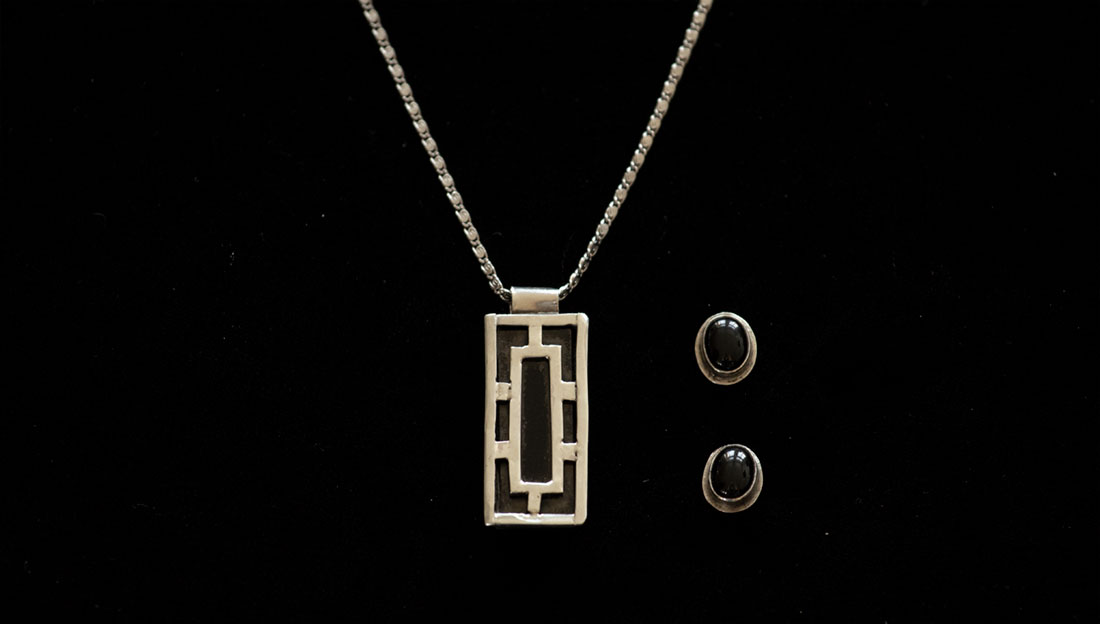
This necklace with a black stone was inspired by carved Chinese windows. Its neutral color has made it one of my most used items. I wear it a couple of times a week.
Having minimalist jewelry allows me to put a finishing touch on simple outfits. I love the neutral colors, simplicity, comfort, affordability and versatility of my minimalist wardrobe, but without a focus like jewelry it can seem too plain. Minimalist jewelry provides instant understated elegance that pulls an outfit together by providing a signature piece of jewelry. I dislike fussing with scarves and other accessories and worrying about matching clothes and patterns every day. My jewelry wardrobe enables me to pull simple neutrals out of the closet, throw them on in five minutes and add a piece of jewelry to finish it off. A quick dab of makeup and I’m on my way for the day. The jewelry integrates seamlessly into my lifestyle and busy routine. Because it works for almost any occasion, it enables me to avoid that uncomfortable feeling that I’m either overdressed or dressed too casually. A wardrobe of classic neutral items paired with Forrest’s jewelry enables me to easily dress an outfit up or down for any event. I can dress and then forget how I look for the rest of the day so I can pursue things that are more important to me.
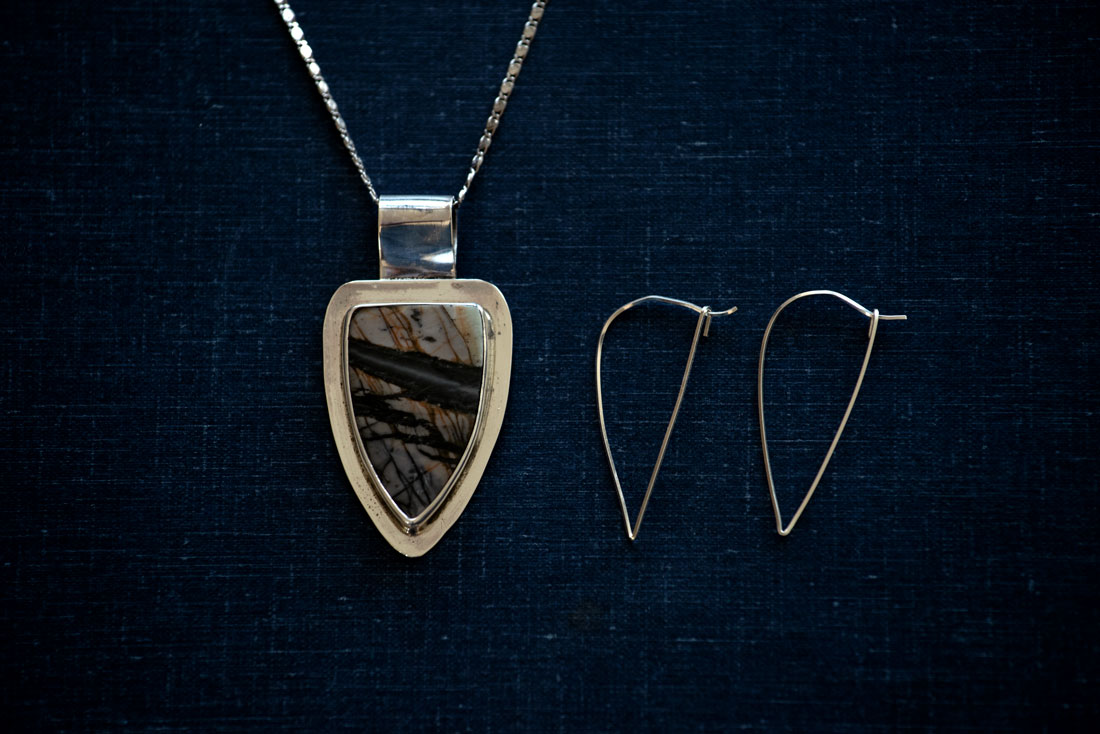
The unusual stone in this pendant goes well with cream-colored, navy, gray and light blue clothing.
Because Forrest makes the jewelry either from relatively inexpensive silver or gold from old or broken pieces that he melts down and because the stones are inexpensive, the pieces cost less than a tenth of the price it would cost to buy most jewelry - another goal of minimalism.
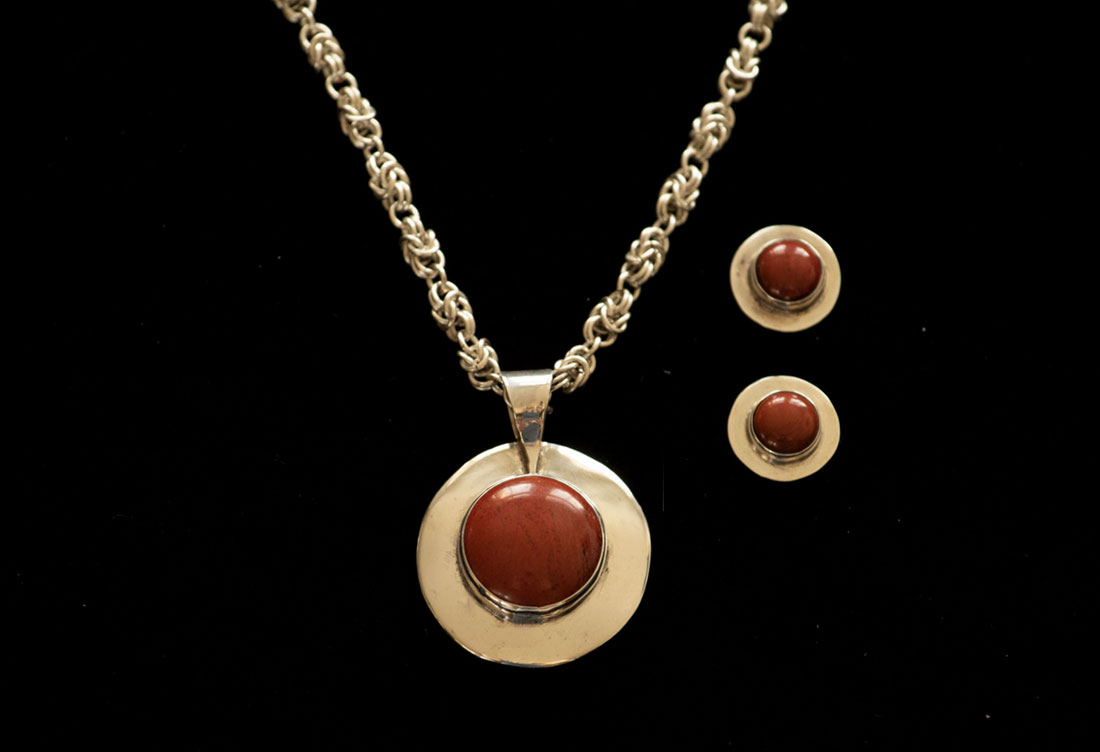
I saw a $600 silver necklace with a red jasper stone in a shop in Taos, New Mexico. It was so beautiful that I stood in awe staring at it for a good ten minutes. Forrest made this similar one, and threw in the earrings for good measure, for about $60 in materials. It is one of the most expensive pieces of jewelry I own.
Like many couples who began their married life as poor students who didn't want to go into debt for a wedding, our wedding rings have gone through an evolution as we have upgraded in later years. Unlike most couples, however, we reused the same gold - with a few mismatched earrings and broken chains melted into the mix - to make new rings. After we were enthralled by an exhibition of Native American wedding sets at the Smithsonian in Washington, DC, Forrest melted the gold from past rings down and created these new ones. The turquoise stones are Forrest's birthstone. The red ones represent my favorite color.
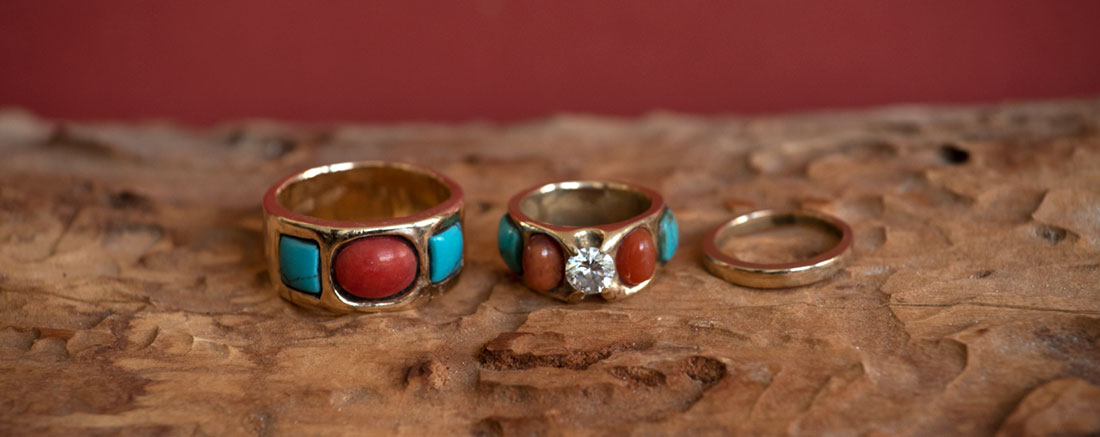
Forrest made this wedding ring set for us after we saw a Native American wedding set collection at the Smithsonian.
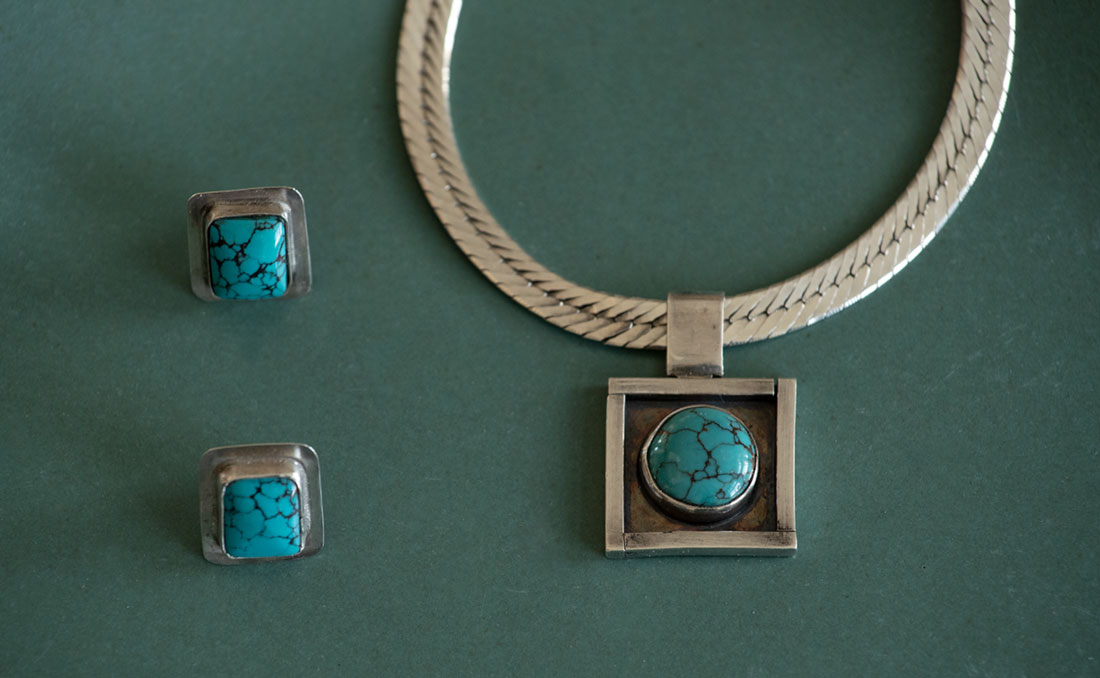
This turquoise necklace was created in the shape of our business logo, which is a circle within a square. The square represents structure and the circle workflow, the two essential parts of multimedia design and development. Turquoise is not considered a minimalist color, but this set is one of my most versatile and heavily used. Turquoise looks beautiful with simple white, black, brown, navy and cream colored clothing.
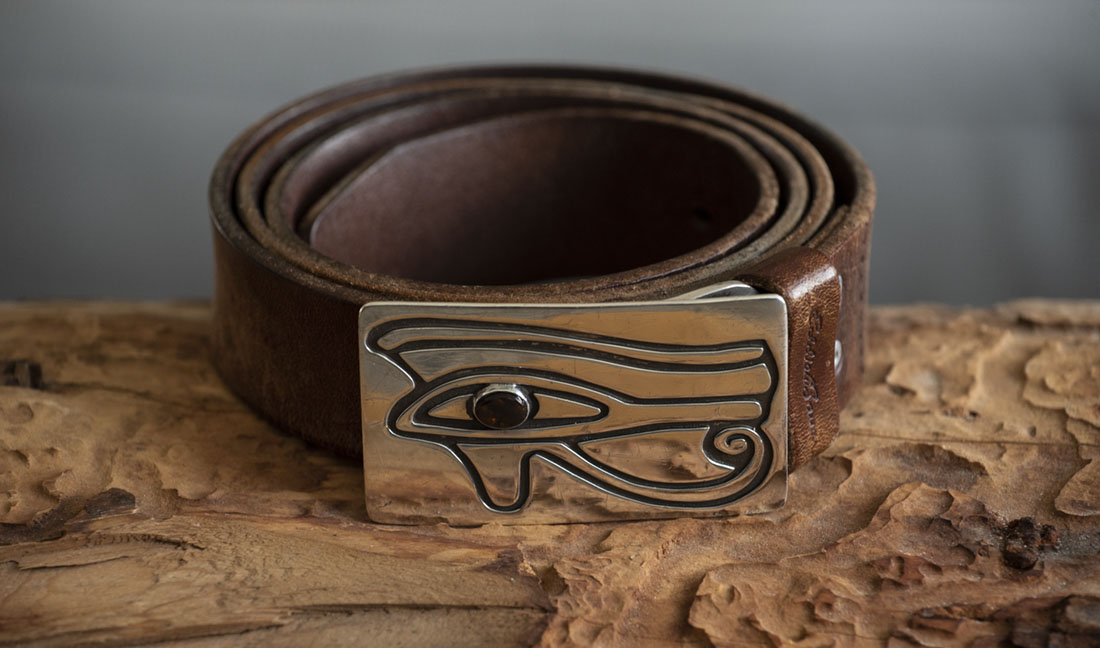
Forrest's old wood-textured belt buckle long ago broke. Several years ago, intrigued by Hopi style jewelry which combines silver cut into shapes with a silver back, Forrest made this belt buckle using an Egyptian design.
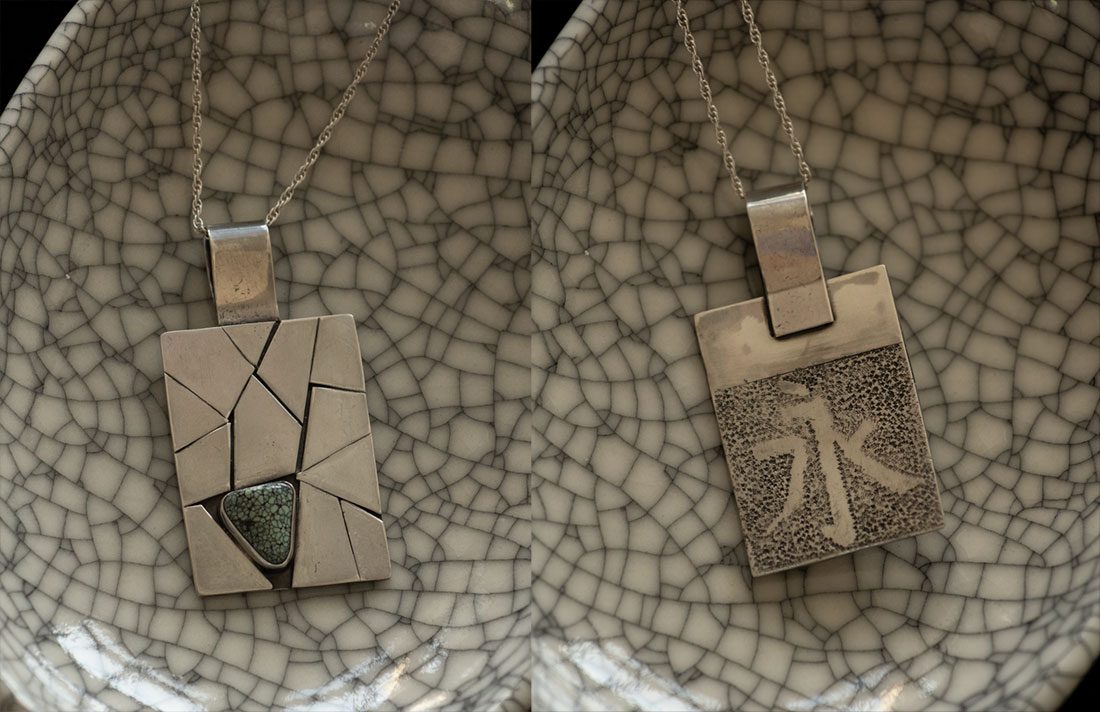
This necklace was made from leftover silver scraps and a part of a bracelet that Forrest had started to make and never finished. The stone reminded us of Asian porcelain that has a cracked glaze like the plate on which the necklace is sitting in these photos and also like the famous cracked ice pattern used to make some carved Chinese windows. The front of the necklace was made using scraps. The backing is a piece of the previously unfinished bracelet, on which is etched the Chinese character for eternity. The symbolism of the necklace is that broken and castoff pieces from our lives that seem worthless can come together to create eternal value.
“The only thing more satisfying than making a piece of jewelry is the smile on the face of the recipient,” Forrest says. That would be me.
Check out these related items

A Minimalist Tries Marie Kondo
A confirmed minimalist finds that Marie Kondo's tidying method helps her to refine an understanding of what brings joy.

When Simplicity is a Necessity
Simplicity is a necessity for disabled people. The accessible design of some great products exemplifies this characteristic.

Creating an Easy Cooking System
Creating a simple, versatile cooking system can enable you to serve delicious meals at home even on days when you are swamped.

Eating Food in Season
Eating locally grown food in season is a great strategy for weight loss, good health, saving money and protecting the environment.

Hand Typing
Simple, legible, careful handwriting on beautiful paper seems old-fashioned in a digital era, but an iOS app developer counts it as one of his most useful tools.

Organizing Family Heirlooms
Now that many of us have cleaned out our closets, we need to store heirlooms, photos and documents properly. Here are some tips.
